

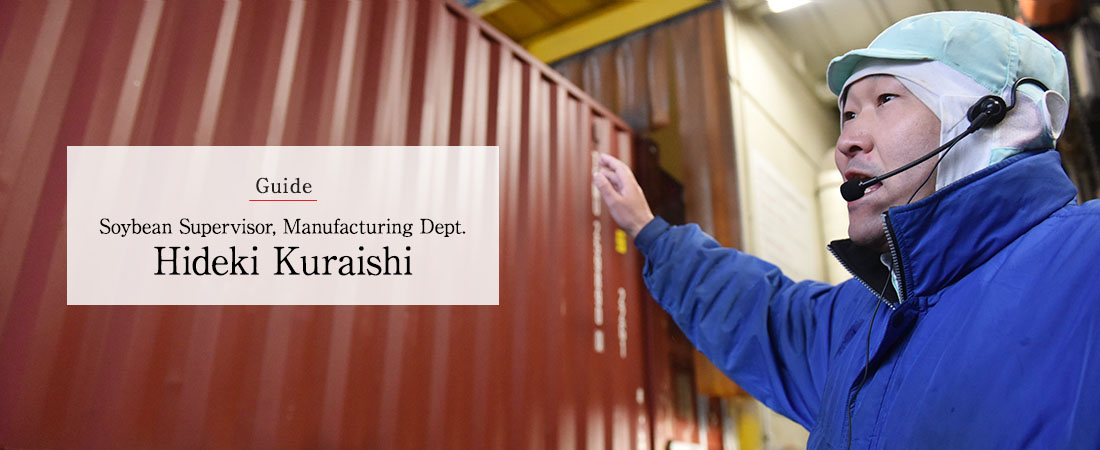
Up to ten large trucks carrying 20 tons of soybeans arrive at the factory every day.
Air current separator/Crude sorter/Magnetic sorter:
The soybeans are passed through three machines for sorting, and then are transferred to one of nine huge soybean silos, each with a capacity of 270 tons.
Soybeans taken from the silo undergo another full-scale quality check.
Crude sorter: Any matter that is considerably larger (10mm or larger) or smaller (4mm or less) than a soybean is removed.
Gravity sorter: Foreign matter that is too light or too heavy is removed by blowing the soybeans with an air current.
Stones and other matter that are the same size as the soybeans and which clear the crude sorter check, are removed with this machine.
Magnetic sorter: Iron sand is removed here.
The second half of the quality check is the color sorting line where the color of the soybeans is checked.
Full color sorter: Information on the three prime colors (red, green, blue) is input. Soybeans with an off color are removed.
The delivered soybeans undergo strict tests with each of the sorting machines, and are then given a Stamp of Approval.
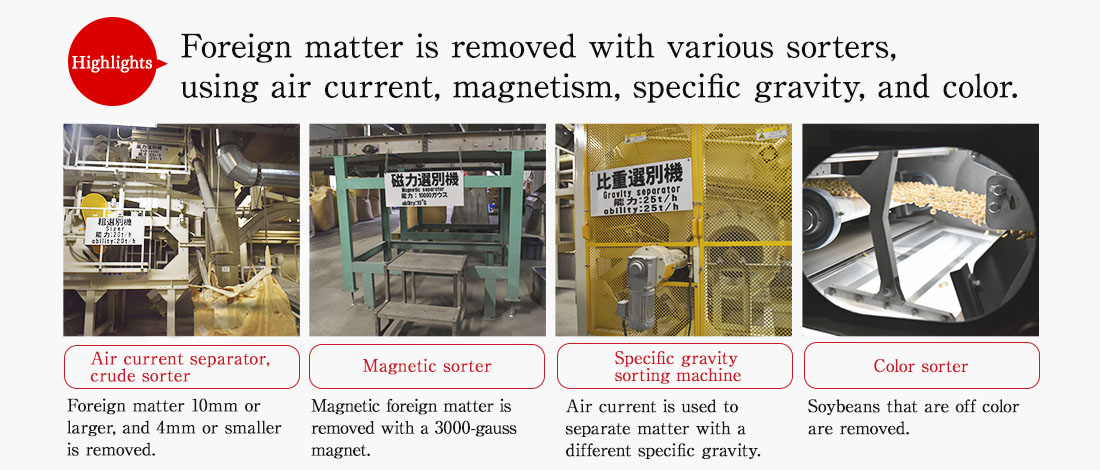

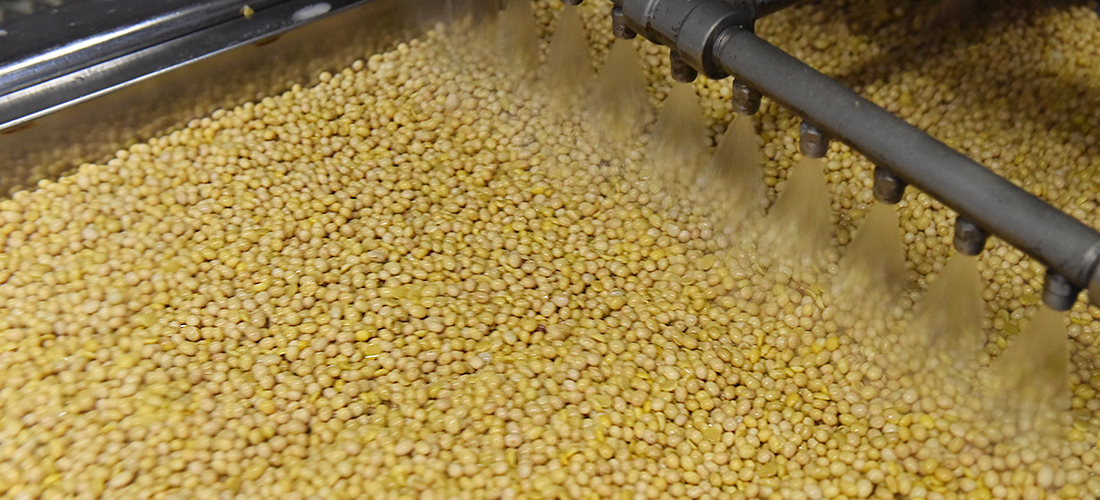
The sorted soybeans are taken to the Soybean Washing Process. First, the soybeans are sprayed with water, and agitated together in a wet-type friction washing machine. After spraying, they are placed in the water-tank type washing machine where impurities that float or sink are removed.
The washed, smooth soybeans are then taken to the Soaking Process where they soak in water for about 12 hours. The soybeans are soaked until water completely penetrates the soybean to the core, and the water content inside the soybean is consistent. If the soybeans are not soaked properly, this will cause inconsistency in the steamed soybeans.
"Soybean hardness and water content vary according to the variety, so different soaking tanks are used according to the variety. Soaking time can also vary by season, so we pay careful attention." (Kuraishi)
Soybeans which have doubled in size after soaking are sent to the steaming line where they are steamed and cooked under a specified temperature and pressure. After cooking, they are cooled in the cooler to the correct temperature suitable for growing yeast. Once cooled, they head to the process where the koji and salt are mixed in.
The miso base formed of the soybeans, koji, and salt are then delivered to the Aging Control leader.
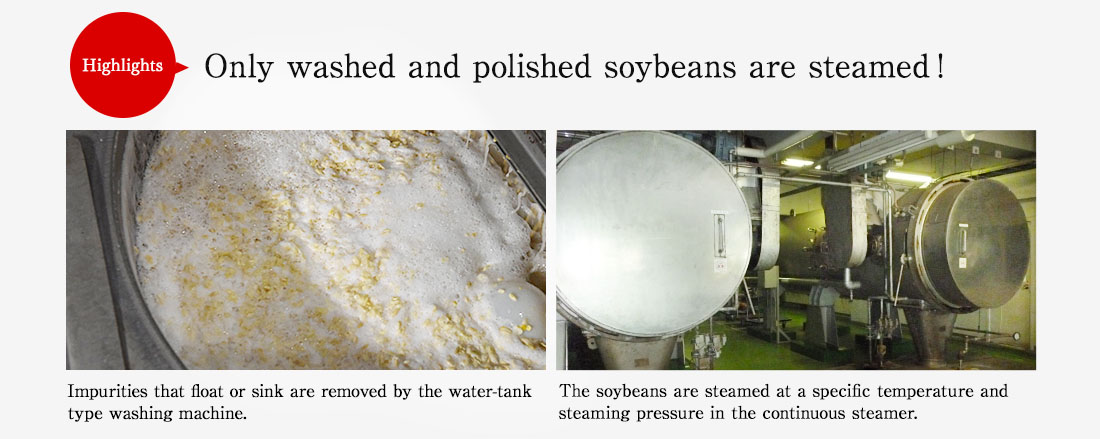

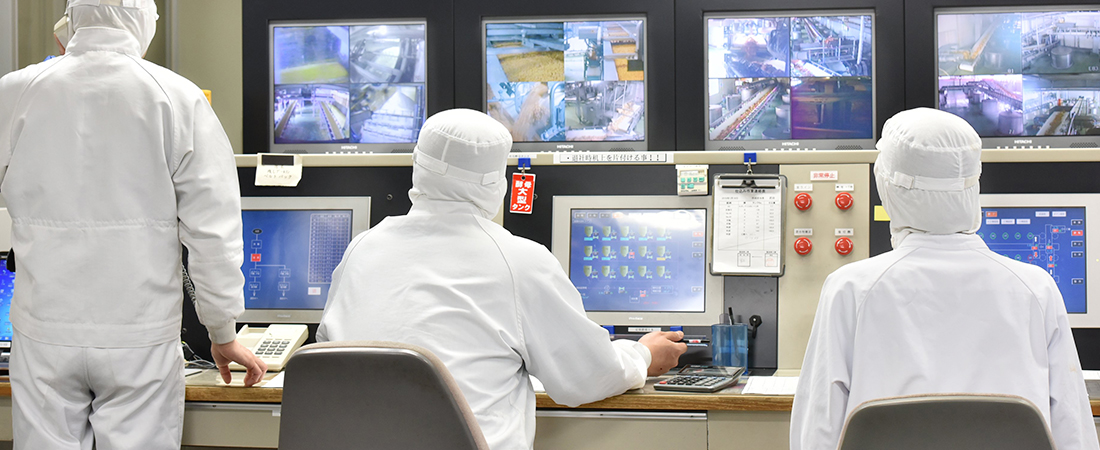
"The water content and characteristics vary according to the type of soybean. So, for example, temperature and steaming pressure differ for each soybean batch. This type of digital management is performed at the central control room. Two-person teams take turns watching the monitors from 6:45 a.m." (Kuraishi)
Preparation ratio and temperature are managed during preparation, and each line that crisscrosses the factory are also checked here. The Central Control Room can be called the heart of miso preparation. Manual operations are also performed here.
"While the soybeans are steaming, we perform an inspection to measure the hardness of the soybeans. The inspector takes a sample of 50 soybeans, places them on a scale, and smashes each one with fingers. The soybeans pass the test if they can be smashed with a pressure of 400 to 600 grams. If the pressure is 300 grams or less, the soybeans are too soft, and the miso will lack viscosity and will not ferment properly. If the pressure is 700 grams or more, the soybeans are too hard. This will cause the miso to be coarse, and the decomposition and fermentation process will not progress well. Although this is a very primitive method, it is the easiest way to check the hardness. We share the data with the Aging Control leader and the Quality Control Section." (Kuraishi)
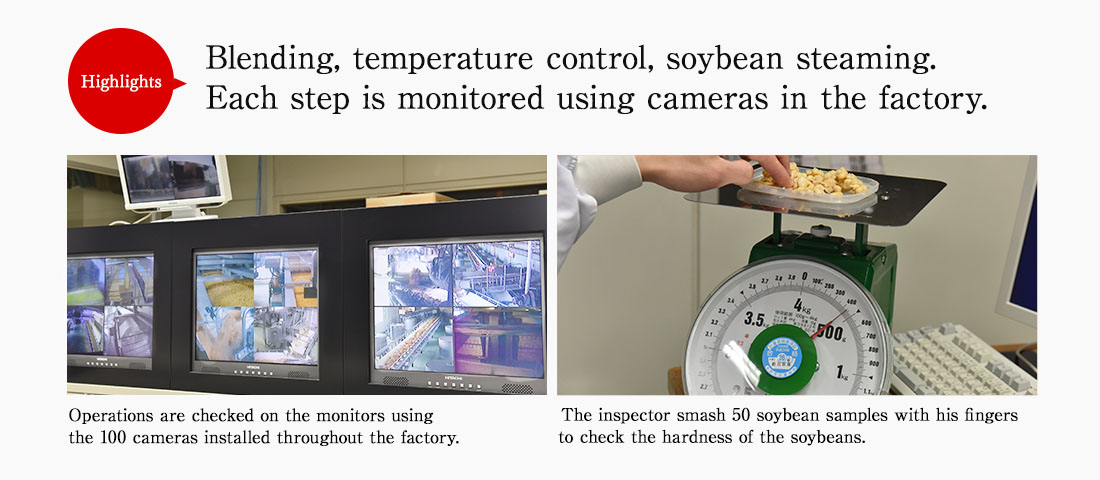

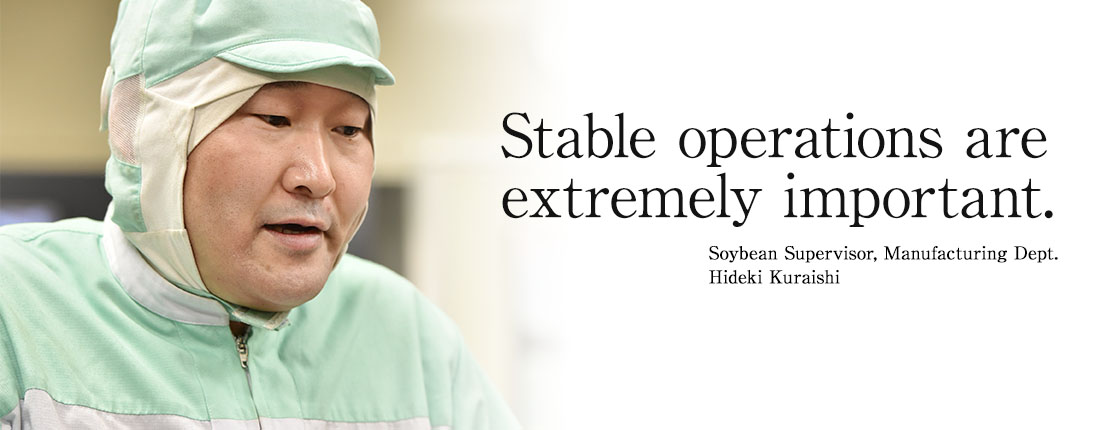
I used to be in charge of aging. After leaving this process, I learned that the soybean selection, washing, steaming, and mixing processes are carried out using hands-on labor and care. This was a refreshing surprise. At the same time, I realized that I needed to work even harder to supply high-quality soybeans.
I believe that stable operations are extremely important. If the line stops during a process, the soybeans could discolor or become too soft, and hinder stable quality. Maintenance and cleaning are indispensable to keep the line running soundly. Every Monday is maintenance and washing day. We cover every inch of the line. I am confident of the quality we provide to our customers.